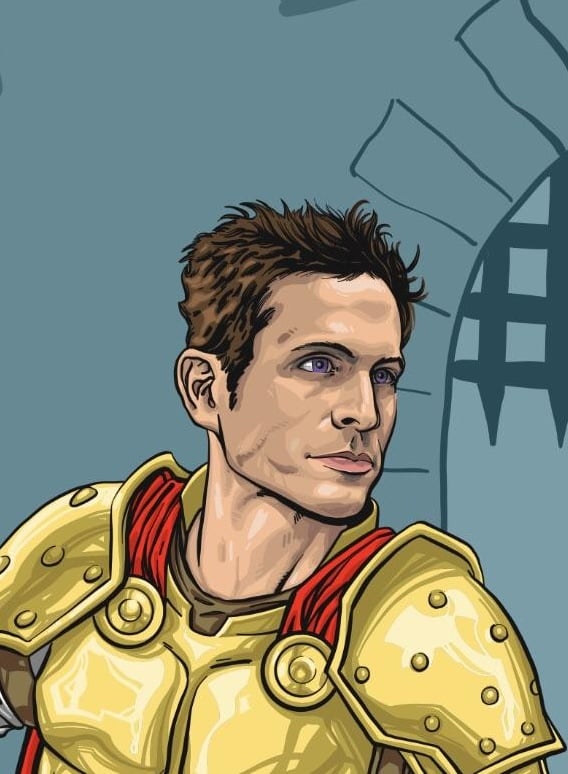[Citation needed] on the 100000x easier part, but nice meme.
Electric cars seem like a stopgap more than anything to me.
I found a source. I hope that helps.
Big Auto has been destroying any idea of high speed rails for decades. Our trains are complete trash because of car lobbyists.
Muskrat is one of the biggest ones to blame.
And they expand the roads and freeways to have rails literally no place to go
Denver has decent rail, but I have to walk/bike across this insane hellscape of cars trying to kill me for 1 1/2 miles to get to the station
Because many of us live in places where you must use a car, there are no alternatives
In such places electric public transport is nothing but a pipe dream
Oh great, you pipsqueaks moved to lemmy? Fuck, you guys are annoying
Public transportation in America is typically a magnet for crime.
I’ll take a hard pass on being trapped in a tube with my assailants.
The worrying thing here is the assumption that we can choose…
The world has 2 billions individual cars. Lithium extraction rate may not be sufficient to make 2 billions cars by 2030… and that’s assuming we don’t need lithium for computers, smartphones, but also not for batteries for the grid (because no solar cell works at night and wind farms are not on demand erther), and… not for electric trucks! Then comes the question of the other metals: copper, nickel, cobalt, …
Trains will not work everywhere for everyone, but not deploying them now and fast will be a severe issue for North America when resources will get scarce.
We need a smart mix of trains, buses, subways, tramways, shared vehicles, bikes, everything but one individual car per person. That era will come to an end because we’re closer to the bottom of our planet’s natural resources stock than the beginning.
There’s not even a real option of keeping gas cars a little while more, as cheap oil is also coming to an end.
The difference between accepting this and “choosing” individual cars is how ready countries will be when resources will get scarce. It may get ugly…
Trains: live super densely, it’s great. Cars: chill bro
I dunno what country you are from, but here in the US of A, the monopolies that own all the train infrastructure make sure to keep trains as public transportation as cost prohibitive as possible.
This always reminds me of the movie, Roger Rabbit. I was a kid and the movie taught me a much deeper/darker lesson than it was meant to teach me at that age. It still irks me.
deleted by creator
In case you need a hint, it was Doom’s plan.
Spoiler alert- the villain buys the transit system and shuts it down, basically steals a town it served, and plans to demolish the town so he can build a freeway over it and profit.
I used to watch roger rabbit as a kid for other reasons
I think I know exactly what you mean and I was in 3rd grade.
I have an electric car because I refuse to pay any more money to fossil fuel companies but still need to drive. I use public transport where possible, but many trips just aren’t viable.
It takes me 30 minutes to walk to the nearest shopping centre, but 2 hours to get there by public transport, or 5 minutes by car.
As an average citizen, I don’t have the means to build or fund new railway lines. I am, however, lucky enough to be able to refuse to drive fossil fueled vehicles and still survive.
because cars are more popular lmao. also they’re easier. cars are not going away.
Because I value my autonomy and don’t want to have to wait for a train to show up when I want to go somewhere. Also, paved roads are significantly cheaper to maintain than rail lines, which makes a substantial difference when you take into account the size of the US.
A frequent transport networks gives you much more autonomy than a car, since you don’t have to worry about maintenance, parking, or traffic. It can be frequent enough to just turn up and go.
Cars come along with many external costs that are often not accounted for, such as the costs associated with pollution and the increased healthcare costs associated with that as well as injuries and deaths caused by cars. Plus there’s all the parking and extra space needed between all of the places people want to go to needed for that parking and road space.
A train network isn’t going to run 24/7 in a town of 300 people no matter how many subsidies it gets from the government. It doesn’t make any sense to spend the resources and incur the pollution cost of running a train with nobody on it.
And before someone brings it up, I absolutely refuse to accept the idea of forcing people to live in cities, or anywhere else for that matter.
Most people live in cities. If those people don’t drive, the problems are pretty much solved.
Small towns can be very walkable, since you can easily get from one edge of town to the other. And they can have a connection to the outside. But again rural populations driving isn’t too much of an issue, as long as they aren’t driving into the city every day.
Instead I have to worry about switching trains and schedules and the weird guy in the corner who might have a gun and the homeless person yelling at the voices in their head.
I honestly will never use public transit as long as a private option is available. Fuck being packed in like sardines with no personal space. It gives me panic attacks.
Because as the wiseman said, somebody just wants to sell more cars.
Because places like America are so spread out (by design) that rail networks, especially in the Great Plains and Southwest, are viewed as impractical unless all of their population moved to cities or towns in close proximity to rail lines, and Americans tend to take up a large chunk of the bandwidth.
I think the link below compliments the video above. It it from the same channel. This seem to be a compounded issue. https://youtu.be/7IsMeKl-Sv0
Yup. And the worst part is, most people do not realize that this is even in issue, let alone how many other problems or creates. Especially ecological ones.
From the end of the video:
Though, I admit, actually fixing American and Canadian cities after they were destroyed by car infrastructure and rebuilt to be car-dependent is a very daunting task, and I’m personally not even convinced it can be done in the foreseeable future, which is a big part of the reason why we left North America for a better city in the Netherlands in the first place.
In case it’s not clear, I’m not against trains, buses, trolleys, trams, and bikeable, walkable cities. Far from it. But regardless of whether cities used to be connected by rail and were bikeable, as stated in the video, they aren’t anymore, and haven’t been for generations in many cases. So what’s the solution in the meantime, while we wait for the slow churning bureaucracy to get its head out of its butt?
I live in the Boston area, and while it doesn’t seem like it would compare to a place like the Netherlands, it’s slowly going in that direction by acknowledging a shift in focus. Places like here and New York are slowly respecting bicycles as a more viable city transport, and expanding the rail/bus systems. If that mindset can continue to occur each time the city planning office receives a complaint about lane congestion, or a city block that’s fallen into disuse, it can make some slow changes that make walking/biking/training a little bit better. They won’t replace the backbone of the city, but often they don’t need to.
A start could be a similar method to the Netherlands. It took them a few decades to get their cities car free again. Whenever a city road was due for resurfacing/redevelopment, instead of just slapping down the same road and calling it a day, other options are considered like adding bus lanes, trams, or bike lanes while reducing the total number of car lanes.
The best part here is it can be done locally. The municipality can decide they want change and commit to a redesign.
That actually sounds reasonable. Are these options and methods being considered in America already? I want to see something like this happening in places like the LA metropolitan area and the Bay Area, the most notoriously gridlocked areas in California, which seems like the most car-centric state in the US.
To find more info about the push for this kind of redevelopment in America I would look to the movement Strong Towns.
Thanks! Unfortunately there isn’t a chapter near my location, the nearest one is 40 minutes away. Still, glad to see a movement already exists!
You’d think. But the truth is throughout the West and Midwest, almost every town has or has had a rail line.
So what’s gone wrong? Pretty much the same thing that’s gone wrong with America in general, big corporations realized shipping to big cities is way more profitable than carrying passengers from small towns. Particularly because most people prefer a car over the train.
We have a ton of dead rail lines just waiting to be revitalized.
So what’s the solution to revamp and restore them? I’ve seen tons of abandoned rail lines, usually rusted to uselessness and even paved over for “walking trails”. California has a hard enough time just extending BART a single mile.
The same solution to our current one with frequent potholes and congestion issues on our highway system; constant maintenance and attention.
I’m not going to delude myself into saying we gather 5 plucky volunteers to knock weeds off the rails and they’re set for a decade. But the costs are ultimately being compared to what the whole country needs to spend for its cars to continue being useful.
I can’t even totally complain about towns making rail trails instead - having some kind of viable walking path is also a good change.
There once was a time we built rail first and the cities appeared along it. The early rail capitalists knew that transit seeds development and that’s what built MOST of the major cities in the Americas. Somehow we forgot that and have instead come to believe that transit only makes sense if it connects dense, fully-developed places that already exist. It’s insipid, but unfortunately makes it past peoples’ bullshit filters routinely. It’s just part of the trend of cities in North America to give no shits about their future development.
It’s total bullshit, though. Most city downtowns can justify small transit easily. Play with the Tom Forth tool and see for yourself. I recommend looking at bus stops per capita for any place you click; that tells a hell of a story about how over or underinvested a community is in car infrastructure. In most of the world, it’s something like 200-400 people per bus stop in a city. In the US, you’re lucky to see 1200 outside of a few edge cases.
The fact is, most trips are within a few miles of home. There’s a lot of space in the world for cars. They’re needed to fill in the edge cases. The truly rural areas. The niche needs of a profession. An unusual living situation, or to provide accessibility, or for so many other reasons. But the default should be transit and bike-ped, as it was for virtually all of human history and as it still is for most people in most cities in most of the world.
When we entertain this “The US is too big for transit” stuff, we’re reversing the victim and offender and substituting the solution with the problem. To start with, intercity transit isn’t even that important a kind of transit. It’s useful and nice, but the kind of trips that happen within a few miles of home are the fundamental ones.
In most of the world, it’s something like 200-400 people per bus stop in a city. In the US, you’re lucky to see 1200 outside of a few edge cases.
Hmm I couldn’t reproduce this, which places did you check? I’ve checked most of the larger cities in Europe and the US. They all seem to have similar numbers, around 800-1000 people per bus stop.
I’ve also noticed that larger population densities usually have less bus stops per population. Which makes sense, as rural areas tend to rely more on buses because they don’t have access to trams or subways. Plus, for higher population densities you need less stops per population, because doubling the amount of bus stops only reduces walk times to the nearest stop by 30%, assuming an equal spread (Circle Area = Pi * Radius²).
I was looking at French cities to get that number. I admit, it was not a comprehensive survey.
Yeah there is zero chance the poster is from the US or anything that isn’t a major city. Electric cars aren’t perfect but they are a hell of a lot better than an ICE.
And even within those cities, they are vast stretches of suburbia, without the density that makes rail and mass transit systems practical. Rail as mass commuter transit works better the more dense a city is (conversely cars work worse). So if you wanted to try to massively reduce cars as an answer to the climate crisis, you’d first need to rebuild all of these cities that were largely built after cars were a thing. Which is even more impractical than electric cars.
Would be AWESOME if we had more dense cities and rail connections like Europe, though! We need the next generation of city planners to encourage more density in our (non Northeastern) American cities.
Europe has a lot of suburbia too and rural areas too though. I live in the SF Bay Area. It’s population density is similar to many regions in Europe (barring ultra urban cities like capitals). Yet with this density (and loads of money) we sadly still don’t have decent public transportation here…
Because trains aren’t economically viable for the vast majority of the US, and where they are economically they are the topic of conversation.
As far as why the conversation would center around the US, that’s just the regular American-centric tilt english conversations generally lean towards. Most of Europe has their shit together in some topics like this (public transportation, for instance) and the US is a huge consumer of automobiles and no one if building mass transit between the middle of nowhere to the other middle of nowhere where we could ‘efficiently’ move individually insignificant numbers of people at a time.
Trains, busses subways and trams with room for bikes. Bike and walking infrastructure along roads and in cities. Secure bike parking both publicly and at home. Frequent and flexible busses. And a wide variety of easily avaliable rental cars.






